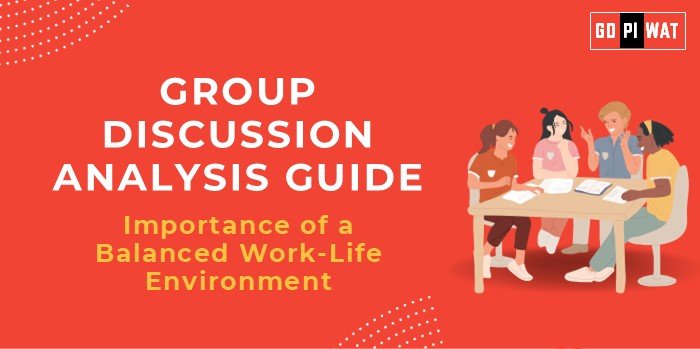📋 Group Discussion Analysis Guide
🌐 Introduction to Importance of a Balanced Work-Life Environment
Opening Context: With increasing demands in both personal and professional domains, maintaining a balanced work-life environment has become crucial for mental health, productivity, and overall well-being. This topic is especially relevant as companies and institutions now recognize the impact of balance on employee satisfaction and output.
Topic Background: The concept of work-life balance emerged in response to the industrial era’s extensive work hours and has since evolved with flexible work policies and digital transformation. The COVID-19 pandemic highlighted the need for balance, making hybrid work models a standard in many organizations.
📊 Quick Facts and Key Statistics
- 📈 Productivity Boost: Companies with work-life balance programs see up to a 25% increase in productivity.
- 💸 Burnout Costs: Employee burnout costs companies up to $322 billion annually in productivity losses (Gallup).
- 🌍 Remote Work Shift: In 2023, over 60% of companies offer some form of remote work, helping employees achieve better balance.
- ⚕️ Mental Health Impact: Balanced work environments reduce anxiety and depression rates by 40%, according to WHO.
🧑🤝🧑 Stakeholders and Their Roles
- 👩💼 Employees: Advocate for policies that allow flexibility, mental health support, and personal development.
- 🏢 Employers: Design balanced work models, provide resources, and set realistic expectations.
- 🏛️ Governments: Implement labor laws and support policies like parental leave and mental health support.
- ⚕️ Healthcare Providers: Offer mental and physical health support to reduce work-induced stress.
🎯 Achievements and Challenges
✨ Achievements
- 📅 Increased Flexibility: Over 70% of companies now offer flexible hours.
- 🏡 Remote Work Success: Remote work is shown to boost employee retention by 10%.
- 😊 Higher Job Satisfaction: Companies with balance policies report higher employee satisfaction.
⚠️ Challenges
- 💻 Boundary Management: Difficulty in separating work from personal life, especially in remote work setups.
- 🌎 Global Comparisons: Scandinavian countries, known for progressive work-life policies, show high productivity and low burnout rates.
Case Studies:
- 🇸🇪 Sweden: Reduced the standard workday to six hours, leading to lower stress and higher productivity.
📖 Structured Arguments for Discussion
- ✅ Supporting Stance: “Work-life balance enhances productivity, reduces turnover, and improves mental health, benefiting both individuals and organizations.”
- ❌ Opposing Stance: “Achieving true balance is challenging in competitive industries, and flexibility can lead to blurred boundaries.”
- ⚖️ Balanced Perspective: “While work-life balance is essential for well-being, organizations and individuals must set boundaries to avoid overwork.”
💡 Effective Discussion Approaches
- 🚀 Opening Approaches:
- 📊 Statistical Approach: “With burnout costing businesses billions, creating a balanced work environment is a necessity, not a luxury.”
- 🏆 Case Study Opening: “Sweden’s reduced work hours demonstrate the benefits of prioritizing employee balance and well-being.”
- 🛠️ Counter-Argument Handling: Recognize that different industries face unique challenges; suggest flexible policies tailored to specific sectors.
📊 Strategic Analysis of Strengths and Weaknesses
- 💪 Strengths: Increased productivity, employee satisfaction, improved health outcomes.
- 🤕 Weaknesses: Implementation costs, difficult boundary setting.
- 🚀 Opportunities: Growth in remote work technology, mental health programs.
- ⚠️ Threats: Economic downturns forcing longer work hours, resistance to change.
🎓 Connecting with B-School Applications
- Real-World Applications: B-school projects on employee well-being, productivity analysis, and operational management.
- Sample Interview Questions:
- “How does work-life balance contribute to long-term productivity?”
- “What are the challenges of implementing a balanced work environment?”
- Insights for B-School Students: Understanding balance fosters leadership that prioritizes both productivity and employee well-being, an asset in modern management roles.


